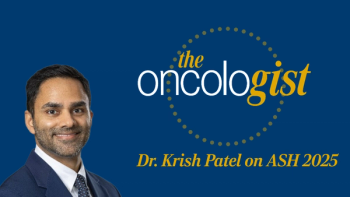
Dr Poh on Optimizing Therapy Sequencing in Relapsed Follicular Lymphoma
Christina Poh, MD, discusses the promising data supporting the chemotherapy-free combination of tafasitamab plus lenalidomide and rituximab for relapsed/refractory follicular lymphoma.
In discussing recent treatment advances for patients with relapsed/refractory follicular lymphoma, Christina Poh, MD, assistant professor, University of Washington, Fred Hutchinson Cancer Center, discusses the promising data supporting the chemotherapy-free combination of tafasitamab-cxix (Monjuvi) plus lenalidomide (Revlimid) and rituximab (Rituxan) for relapsed/refractory follicular lymphoma (R/R FL).
“It is hard to compare because we don't have any trial except for Revlimid and rituximab, which was the compare comparator arm in this study,” says Poh.
While Poh explains that direct comparisons are limited due to the lack of head-to-head trials, the study in question used lenalidomide and rituximab, a currently approved chemotherapy-free regimen, as the comparator. The addition of tafasitamab led to a notable improvement in progression-free survival (PFS), with a median PFS of 22.4 months (95% CI, 19.2-not evaluable) vs 13.9 months for the control arm (95% CI, 11.5-16.4). This nearly doubles the PFS, underscoring the potential of tafasitamab to enhance outcomes when added to an established backbone.
When asked how this triplet regimen compares to other emerging chemotherapy-free options, such as bispecific antibodies—including agents like epcoritamab (Epkinly) and mosunetuzumab-axgb (Lunsumio)—Poh notes that no direct comparative trials have yet been conducted. As such, definitive conclusions on relative efficacy cannot be drawn.
Importantly, Poh shifts the focus from comparing therapies to optimizing their sequencing over the course of treatment. Since follicular lymphoma is a chronic malignancy characterized by multiple relapses, the key clinical question becomes how to sequence available therapies to extend disease control and maintain patient quality of life. Each option may offer value at different points in the disease trajectory.
Poh concludes by stating, “the question is not necessarily, how this compares. I think the more important question is, how do we sequence these therapies to get the most optimal outcomes?”








































